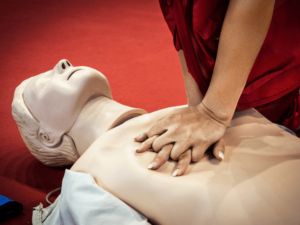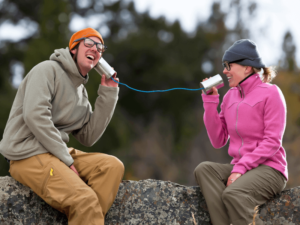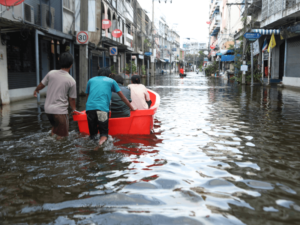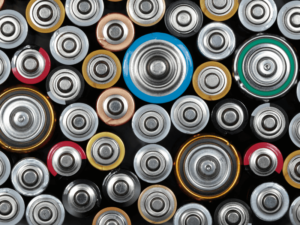10 Tips for Developing Human Continuity Plans
The world may be a frightening place, with calamities of one kind or another seemingly unavoidable. These can be natural disasters like hurricanes and earthquakes or artificial disasters like a nuclear meltdown, a terrorist attack, a global-scale cyber attack, or another unforeseen event that disrupts our electricity or access to technology. If any of these were to cause a catastrophic disaster in the future, the key would be preparedness in order to succeed in recovery, sustain human continuity, and prevent major disruptions in day-to-day life. But how can individuals, governments, and societies ensure human continuity in the wake of a serious disaster? Let’s take a look at how to develop a successful continuity plan to avoid severe disruptions in our daily lives, even in the event of an unexpected, catastrophic occurrence.
Anticipate Possible Disasters
 While it is not always possible to forecast what catastrophes will hit and when they will strike, it never hurts to at least anticipate what could happen. For instance, people who live in areas that are prone to hurricanes or earthquakes can do their best to anticipate and build a continuity plan for those types of disasters.
While it is not always possible to forecast what catastrophes will hit and when they will strike, it never hurts to at least anticipate what could happen. For instance, people who live in areas that are prone to hurricanes or earthquakes can do their best to anticipate and build a continuity plan for those types of disasters.
With weather-related disasters, it can be a little easier to know in advance that something serious could happen. But it’s not always feasible to predict other types of disasters ahead of time, which is part of the reason why the continuity of day-to-day life is disrupted.
This provides even more incentive to plan for potential calamities and devise a disaster recovery strategy. Individual families, businesses of all sizes, and even local governments should take steps to formulate a continuity plan. Even if you can’t predict the exact catastrophe, have a plan ready for certain scenarios. What would you do, for example, if the power went out for days or if you couldn’t get food? Even if the exact circumstances aren’t replicated, working on a continuity plan ahead of time and having an established strategy can help you avoid being overwhelmed by an unexpected disaster.
Learn Basic Emergency Measures
 In many types of disasters and emergencies, some acts, such as switching off the gas and water lines, will become highly possible, which is why everyone in your family or inner circle must understand how to carry out specific tasks. Remember that uncertainty about what to do or anticipate only fuels turmoil among people. It’s more probable that things will go according to plan when people are aware of what to anticipate and ready for the worst.
In many types of disasters and emergencies, some acts, such as switching off the gas and water lines, will become highly possible, which is why everyone in your family or inner circle must understand how to carry out specific tasks. Remember that uncertainty about what to do or anticipate only fuels turmoil among people. It’s more probable that things will go according to plan when people are aware of what to anticipate and ready for the worst.
Along those same lines, learning first aid and CPR should be considered a prerequisite for everyone preparing for a disaster situation. In the wake of a catastrophic event, there is no guarantee there will be access to medical facilities. This could leave people on their own to provide first aid to family members and neighbors. The same principles apply to being able to use fire extinguishers and other tools that can potentially save lives during an emergency.
Create a Meeting Spot
Imagine a disaster occurring while all members of your family aren’t together at home. In the midst of pandemonium, how will you reunite? Again, this is where having a continuity plan and preparing for a crisis ahead of time come in handy. Make a plan for how, where, and when the family will unite if they are unable to return home. It’s possible that roads could be obstructed or that communication channels would be unreachable. Even though it would need some creativity, it’s a good idea to have at least one or two meeting places and a few different options for how to get there if families become split up when a disaster strikes.
Stay in Touch
 As mentioned, the risk of communication becoming impacted during a disaster is high. Cell phones could be jammed or offline. Landlines may not be in use. The Internet and social media channels could also be unavailable. However, it is vital to maintain contact with family, friends, and neighbors to guarantee that you will have support if required and that you’ll be able to aid others in need, once again aiding your chances of securing human continuity.
As mentioned, the risk of communication becoming impacted during a disaster is high. Cell phones could be jammed or offline. Landlines may not be in use. The Internet and social media channels could also be unavailable. However, it is vital to maintain contact with family, friends, and neighbors to guarantee that you will have support if required and that you’ll be able to aid others in need, once again aiding your chances of securing human continuity.
This also ties back to planning for a disaster ahead of time. What methods of communication might not be viable in certain circumstances? Are there alternative ways of getting in touch with people during those circumstances? At the same time, make sure you have the written contact information of everyone you might need to reach out to during an emergency. This includes phone numbers, addresses, emails, and anything else you may need to contact them. Remember, gone are the days when the average person memorizes phone numbers. So, keep a written log of everyone’s contact details in case you don’t have access to a cell phone.
Stay Fueled Up
 If a disaster that causes power outages strikes and lasts for an extended period, it’ll be critical to have a supply of gasoline, oil, and other fuel sources. It might be impossible to buy gas from stations to fuel your car in the aftermath of disasters. That can limit how far you can drive if you need to mobilize during an emergency. It’ll also be necessary to have fuel on hand to run generators that can supply electricity until the power comes back.
If a disaster that causes power outages strikes and lasts for an extended period, it’ll be critical to have a supply of gasoline, oil, and other fuel sources. It might be impossible to buy gas from stations to fuel your car in the aftermath of disasters. That can limit how far you can drive if you need to mobilize during an emergency. It’ll also be necessary to have fuel on hand to run generators that can supply electricity until the power comes back.
Of course, if you can anticipate an emergency, it’s a little easier to ensure your tank is full and that you have reserves available. But it’s also a good idea to keep at least a few extra gallons of gasoline, as well as other sources of fuel, tucked away. If a disaster strikes, having extra gas can be a lifesaver.
Have Alternate Transportation Methods
 While having extra fuel supplies can keep motor vehicles running, it’s not a bad idea to include alternative modes of transportation in your continuity plan in the event of severe disasters. Even if your car works, that doesn’t mean the roads will be accessible or safe. Following an earthquake or hurricane, routes could be cut off or flooded.
While having extra fuel supplies can keep motor vehicles running, it’s not a bad idea to include alternative modes of transportation in your continuity plan in the event of severe disasters. Even if your car works, that doesn’t mean the roads will be accessible or safe. Following an earthquake or hurricane, routes could be cut off or flooded.
Obviously, walking will be one option, albeit it is not always the most efficient option. In areas that are prone to flooding, having a canoe or kayak can be a good alternative form of transportation. In other situations, a bicycle, scooter, or skateboard can be an effective way to get around. Again, not every alternative form of transportation will fit every disaster situation. So, anticipate the various disasters that are most feasible and prepare to have the most suitable transportation alternatives available to you.
Create an Emergency Kit
The days of people building bomb shelters to cope with a nuclear holocaust are long over. However, the idea behind those bunkhouses is far from obsolete when creating a continuity plan for a potential disaster that could happen in today’s world. Even if you can’t build a permanent shelter, stockpiling the types of supplies that would go into a bomb shelter can be a good idea and a great step toward securing human continuity.
This means gathering drinking water and nonperishable foods, as well as a can opener and any other items needed to prepare those foods. Even if it’s only enough food to last for a few days or a week rather than months, you’ll still have a head start on maintaining some sense of continuity in the wake of a disaster. In addition to food supplies, trash bags, soap, sanitation supplies, a first-aid kit, flashlights, and even maps can all become invaluable if there is a disruption to everyday life.
Load Up on Batteries
 If the power goes out due to a catastrophic event, such as a solar storm hitting the earth, batteries will become one of the most crucial items you can have. The flashlights you should included in your emergency kit will need batteries. The same is true of radios, which could be your only source of information if the power and the Internet go out. In addition to flashlights and batteries, other tools and devices may also need batteries. So, a healthy collection of batteries can be just as important as having extra fuel and other supplies that will be invaluable during a disaster. Be sure to account for all in your continuity plan.
If the power goes out due to a catastrophic event, such as a solar storm hitting the earth, batteries will become one of the most crucial items you can have. The flashlights you should included in your emergency kit will need batteries. The same is true of radios, which could be your only source of information if the power and the Internet go out. In addition to flashlights and batteries, other tools and devices may also need batteries. So, a healthy collection of batteries can be just as important as having extra fuel and other supplies that will be invaluable during a disaster. Be sure to account for all in your continuity plan.
Secure Your Documents
If a massive tragedy occurs in the future, it’s a good bet that disruptions to our technology will occur. This implies you can’t count on having access to digital papers, which many of us have come to take for granted. Individuals and corporations must have paper copies of their most essential documents and keep them in a safe and secure location.
Documents like birth certificates, social security cards, passports, property deeds, and other vital papers must be accounted for and secured in your continuity plan. It’s impossible to foresee when these documents might be necessary in the aftermath of a disaster. But it can’t hurt to have them collected together and put somewhere they will be safe and accessible when needed.
Stick to a Routine
 If there is a disruption to daily life, the best thing you can do is find a new routine or develop a new sense of normalcy. Rather than dwelling on what you don’t have or how things have changed, embrace the new situation and move forward.
If there is a disruption to daily life, the best thing you can do is find a new routine or develop a new sense of normalcy. Rather than dwelling on what you don’t have or how things have changed, embrace the new situation and move forward.
People are inherently resilient in the wake of a disaster, but it helps to find some semblance of regularity. With regard to things like when you eat and when you sleep, try to maintain a specific routine regardless of the other circumstances created by the disaster. In a way, this will help you to reset the idea of human continuity and survive any disaster the world has in store for us.
Create Impact with us:
Join our membership and
contribution programs
Participate in our
upcoming events:
Schedule a call with
our experts:
Advancing Earthquake Resilience: Strategic Urban Planning and Global Partnerships
In an era where urban landscapes continue to sprawl and the frequency of natural disasters seems to be on the rise, the importance of building resilient cities has never been more pronounced. Earthquakes, in particular, pose a significant risk to densely populated areas, with the power to cause extensive damage and incur millions in damage […]
Cyber Resilience in the Energy Sector: Safeguarding the Grid from Digital Disruptions
In today’s interconnected world, the energy sector stands as a vital backbone of national and global infrastructures, facilitating everything from lighting our homes to powering industries. However, this sector is increasingly finding itself in the crosshairs of cybercriminals, making cyber resilience not just a matter of technological integrity but of national security. The concept of […]
The Role of Local Governments in Strengthening Infrastructure Resilience
The significance of local governments in strengthening infrastructure resilience cannot be understated. Often perceived as entities primarily focused on addressing routine community concerns and improvements, their responsibilities extend far beyond these day-to-day operations. In the realm of preparing for and mitigating the effects of large-scale, catastrophic events—referred to as “black sky” disasters—local governments emerge as […]
